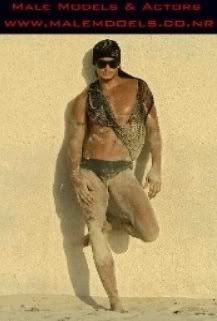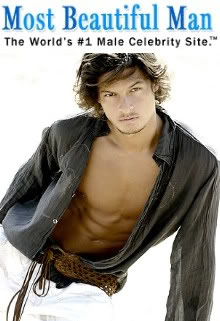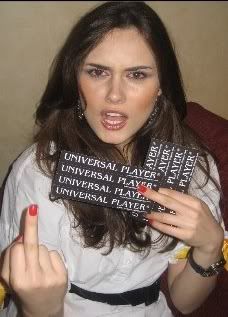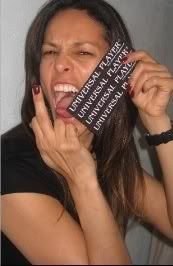
The term "supermodel" took hold in the popular culture of the 1980s and 1990s. However, according to Model: The Ugly Business of Beautiful Women by Michael Gross, the first known use of the term "supermodel" was in the 1940s by an agent named Clyde Matthew Dessner in a "how-to" book he wrote about modeling.[9]
Janice Dickinson has frequently claimed to being the originator of the term. In an interview with ET, Janice Dickinson claimed to have coined the term "supermodel" back in 1979, as a portmanteau of superman and model. According to her, her agent Monique Pilar of Elite Modeling Agency, asked her, "Janice, who do you think you are? Superman?". She replied saying, "No... I'm a supermodel, honey, and you will refer to me as a supermodel and you will start a supermodel division." Dickinson also claims to be the first supermodel. [10]
[edit]First Supermodel
Further information: Lisa Fonssagrives
Lisa Fonssagrives is considered by most in the fashion industry as the world's first supermodel. Fonssagrives was in most of the major fashion and general interest magazines from the 1930s to the 1950s, including Town & Country, Life, Vogue, the original Vanity Fair, and Time. The relationship between her image on over 200 Vogue covers and her name recognition led to the future importance of Vogue in shaping future supermodels.[11][12]
1960s - 1970s
Christie Brinkley
In 1968, an article in Glamour described Twiggy, Cheryl Tiegs, Wilhelmina,Veruschka, Jean Shrimpton and fifteen other top models as "supermodels".[13] The term supermodel gained currency in the 1960s by analogy with Andy Warhol's "Superstars". Of the prominent models of the 1960s, "Twiggy" (Lesley Hornby) is an example of a supermodel of the era, as is Donyale Luna, the first African American model to appear in Vogue. The first African American model to be on the cover of American Vogue was Beverly Johnson. In the 1970s, some models became more prominent as their names became more recognizable to the general public. These models included Janice Dickinson - credited herself in 2003 as being the first supermodel and claims to have coined the term "supermodel"[14] - Cheryl Tiegs, Jerry Hall, Iman Abdulmajid, Patti Hansen, Anna Bayle, Beverly Johnson, Gia Carangi and Christie Brinkley.
1980s - 1990s: Supermodel Era
Linda Evangelista uttered "We don't wake up for less than $10,000 a day."
In the early 1980s, fashion designers began advertising on television and billboards. Models became more familiar to the masses. They were no longer nameless individuals. Catwalk regulars like Carol Alt and Paulina Porizkova began to endorse products with their names as well as their faces, getting in front of everything from Diet Pepsi to Ford Trucks. Elle Macpherson, who became known as "The Body", sold more pin-up posters than any actress in Hollywood.[citation needed] As the Models began to embrace old-style glamour, they were starting to replace movie stars as symbols of luxury and wealth. In this regard, many viewed supermodels not so much as individuals but as images.[15]
By the 1990s, supermodels became prominent in the media.[8] Earning the title "supermodel" meant that the model was a superstar, winning fame simply for being a "personality". They did talk shows, were cited in gossip columns, partied at the trendiest nightspots,[15] landed movie roles, inspired franchises, dated or married movie stars, and made millions.
"We don't wake up for less than $10,000 a day." uttered by supermodel Linda Evangelista has become the most famous quote in modeling history.[4] Fame allowed them to take control of their careers, market themselves, and earn higher fees. In 1991, Christy Turlington signed a contract with Maybelline that paid her $800,000 for twelve days' work each year. Four years later, Claudia Schiffer reportedly earned $12 million for her various modeling assignments.[15] Authorities ranging from Karl Lagerfeld to Time magazine had declared the supermodels more glamorous than movie stars.
Although many models were referred to as supermodels during this time, only six, known as the "Big Six", were officially recognized and accepted by the fashion world as supermodels: Claudia Schiffer, Cindy Crawford, Kate Moss, Linda Evangelista, Naomi Campbell and Christy Turlington. They were the most sought after models, dominating over magazine covers, fashion runways, editorial pages, and advertisements. [16][15][8] Excluding Moss, they are known as the "original supermodels".[7][17][18]
[edit]Late 1990s - present: Decline of the Supermodel
Adriana Lima at the Spiderman 3 premiere in 2007.
In the late 1990s, models were slowly being replaced by actresses, pop singers, or other celebrities on the covers of fashion magazines and ad campaigns.[19][20] The rise of celebrity culture relegated many models to anonymity. A popular "conspiracy theory" explaining the supermodel's disappearance is that designers and fashion editors were sick of their "I won't get out of bed for less than $10,000 a day" attitude and made sure a small group of models would never again have the power of the Big Six. However, Charles Gandee, associate editor at Vogue, said, high prices and poor attitudes contributed less to the decline of the supermodel. As clothes became less flashy, designers turned to models who were less glamorous, so they wouldn't overpower the clothing.[16] The majority of models come from non-English speaking countries and cultures, making the cross over to mainstream spokesperson and cover star difficult.[21] The opportunities for super stardom were waning in the modeling world. [4] On September 2007, Claudia Schiffer stated, "Supermodels, like we once were, don't exist any more," and reckons that Gisele Bündchen is the only one who comes close to earning the supermodel title.[22] However, the term is now being used more loosely by the popular media, naming models as supermodels even though the model has no extensive background in high fashion couture and/or has not attained worldwide recognition.
The most famous models of the late 1990s and 2000s include Karolina Kurkova, Kate Moss, Natalia Vodianova, Laetitia Casta, Amber Valletta, Carmen Kass, Alek Wek, Alessandra Ambrosio, Liya Kebede, Angela Lindvall, Karen Elson, Julia Stegner, Bridget Hall, Yfke Sturm, Eva Herzigova, Gisele Bündchen, Adriana Lima, Gemma Ward, Jessica Stam, Shalom Harlow, Tyra Banks, Heidi Klum, and Doutzen Kroes.
Tuesday, November 20, 2007
SOME MODELING HISTORY, GOOD TO KNOW !
Posted by
Patrick Ribbsaeter
at
Tuesday, November 20, 2007
![]()
Subscribe to:
Comment Feed (RSS)























































![Validate my Atom 1.0 feed [Valid Atom 1.0]](http://i130.photobucket.com/albums/p242/ribbsaeter/valid-atom.png)

|